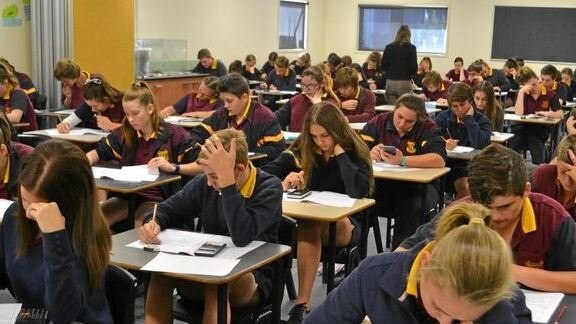Ten 10 simple things you can do to boost your marks in Monday’s mathematics exams
An HSC mathematics expert reveals 10 simple things you can do to get more marks in Monday’s advanced and standard exams.
Education
Don't miss out on the headlines from Education. Followed categories will be added to My News.
Leading Sydney tutoring firm Matrix Education’s head of maths Oak Ukritnukun has revealed 10 key things students must do if they want to get every last possible mark in Monday’s mathematics exams.
1. Read the questions carefully
Identify what the questions are looking for and what information you are given to work with. You will be surprised how many students got the answers wrong just because they did not answer what the questions were asking.
2. Set a game plan
Always develop a plan to tackle the 4–5-mark question. It’s inevitable that there will be one or two questions that are worth this much (the 2020 HSC cricket question is a good example of this). These questions often require you to develop a plan requiring several steps. Remember that while difficult questions are usually constructed from a series of questions built from basic foundational knowledge, they sit under one big application.

3. Be mindful of time
For Standard and Advanced exam sitters, you have the freedom to skip to any questions you like. Make sure to cultivate all the marks first, then return to spending time thinking about the more difficult questions. But again, always keep your eyes on the clock. For Extension 2 students, make sure to leave at least a full hour to tackle Question 16.
4. Do not forget +C
Do not forget ‘+C’ for all indefinite integrals. You will be surprised by the damage this mistake can make when this special constant is missing!
5. Know your reference sheet!
All maths students are given a reference sheet to use during the exams. You must know where everything is placed on the sheet, so you don’t waste precious exam time flipping through the pages. More importantly, know what’s not given on the reference sheet. For example, the compound angle formula sin(A-B), cos(A-B) and tan(A-B) are not included in the sheet.
6. Calculator functions
Your calculator is your best buddy. Learn how to use the ‘STO’ and ‘RCL’ functions on your calculator. For multi-steps questions, answer the questions with the degree of accuracy questions are asking for but make sure to use the “stored” exact values to continue with successive steps in the questions. Anyone dealing with vectors should also learn how to use “POL” and “REC” functions on your calculators.

7. Always sense check your answers
Is the answer too big or too small? Can the answer take the negative value? If not, trace back to find the mistake and correct it. Remember, your answer should agree with the context of the question.
8. Make it easy for the marker
Always place a box around your final answer. When an examiner looks at your working, the first thing they perceive should be your final answer. You do not want the examiner wading through your response looking for solutions.
9. Do not panic
If you make a mistake in early parts of the multipart questions and you’re running out of time, don’t panic. An early error will only be penalised once. This policy is, however, not applied if the original error greatly simplifies the remaining parts.
10. Everything is read by examiners
If you make a mistake, just place a single line through working you have abandoned — keep it legible. A correct response, crossed out and not replaced, will still gain full marks. If replaced, part marks are possible.




